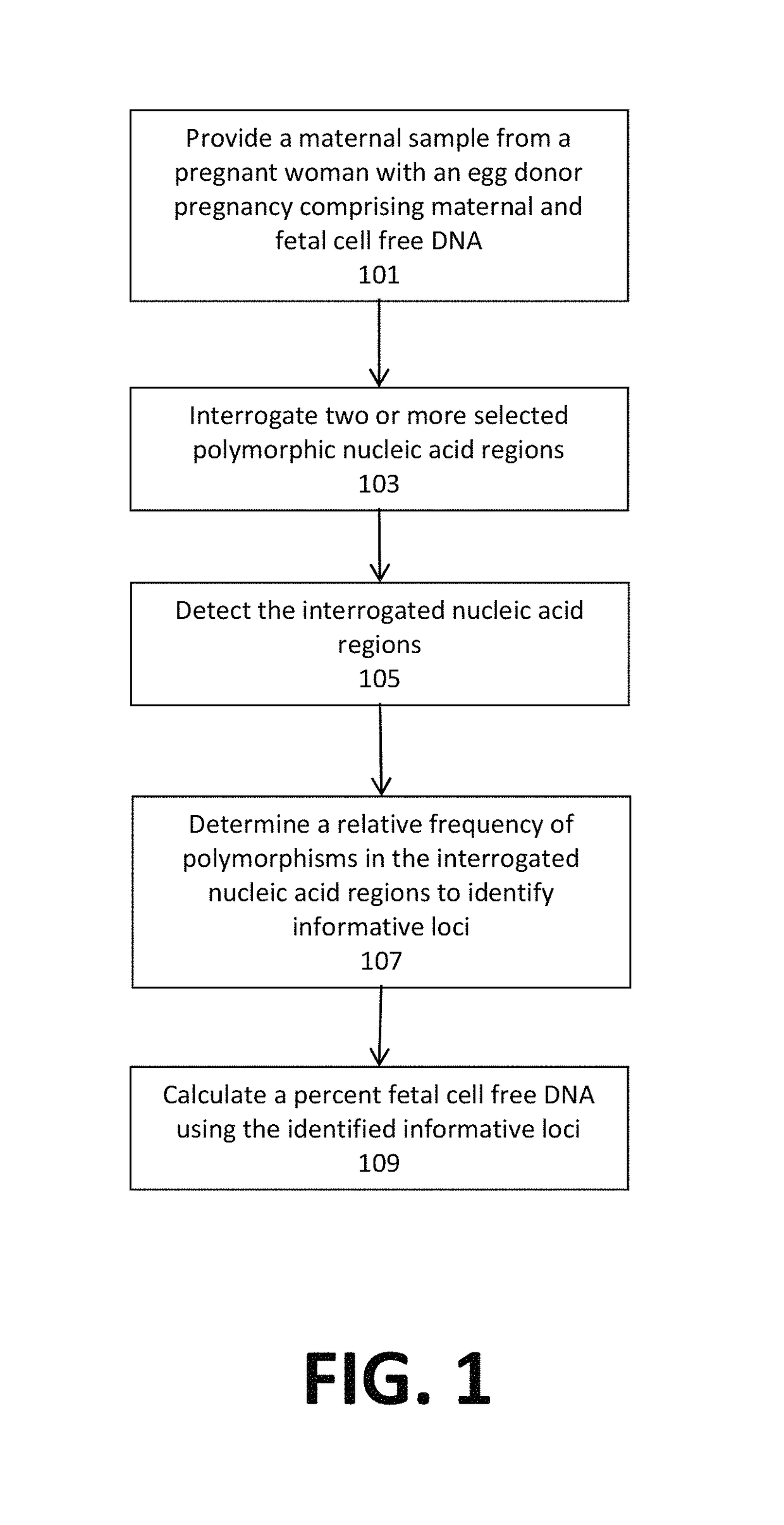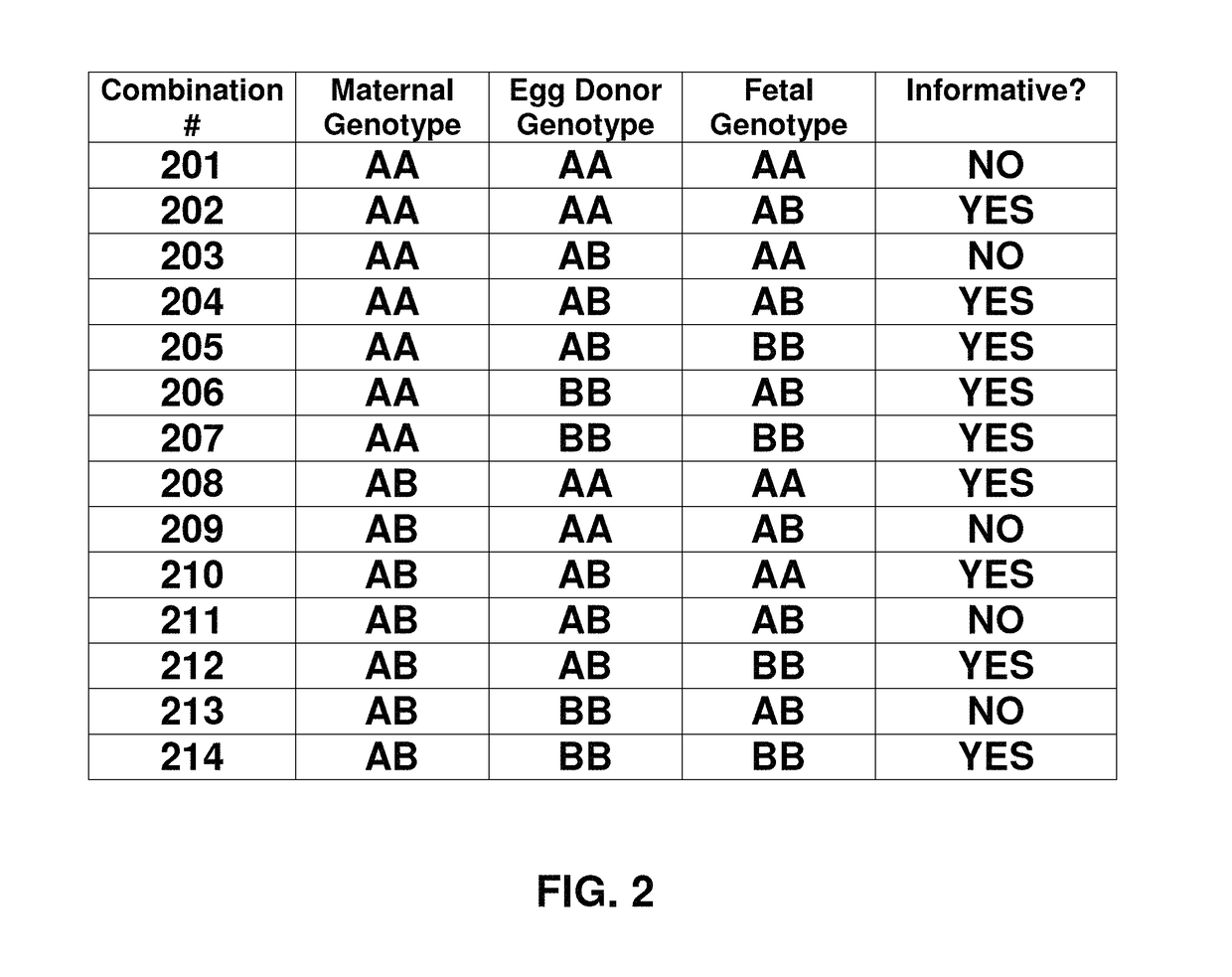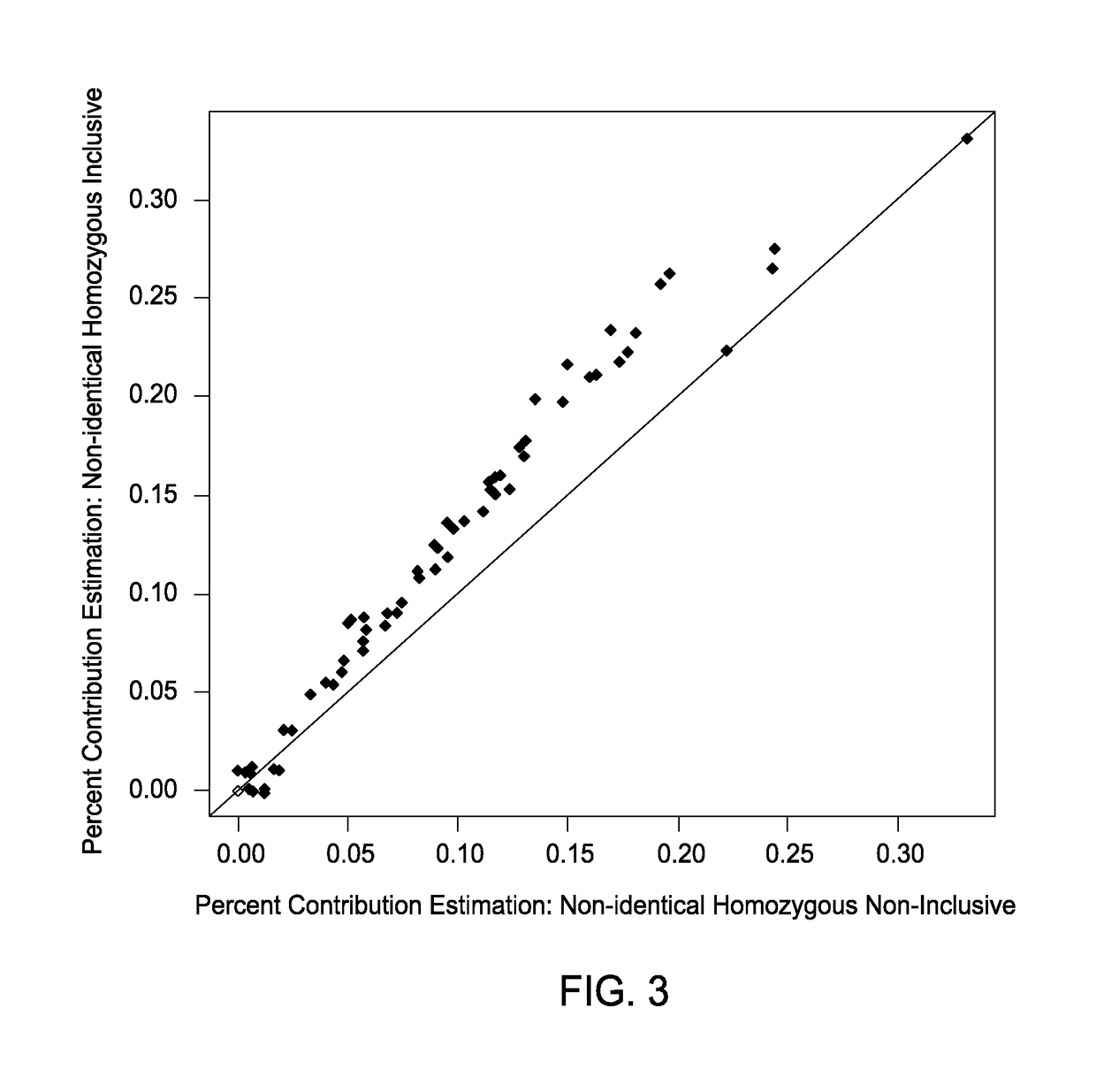Noninvasive detection of fetal aneuploidy in egg donor pregnancies
a technology of fetal aneuploidy and detection method, which is applied in the field of non-invasive detection of fetal aneuploidy in egg donor pregnancies, can solve the problems of difficult analysis, high cost, and high risk of miscarriage, and achieves the effect of not cost-effective using non-selective techniques such as mpss and carrying a risk of around 1% miscarriag
- Summary
- Abstract
- Description
- Claims
- Application Information
AI Technical Summary
Benefits of technology
Problems solved by technology
Method used
Image
Examples
example 1
and Samples
[0181]Subjects were prospectively enrolled upon providing informed consent under protocols approved by institutional review boards. Subjects were required to be at least 18 years of age. A subset of enrolled subjects, consisting of 16 individuals consisting of 8 individuals from a first ethnic population and 8 individuals from a second ethnic population, was selected for inclusion in this study. To mimic a mixed sample from an egg donor pregnancy in which the maternal sample comprises DNA from two distinct individuals that do not share approximately half of the genetic information of the other, mixed samples were prepared comprising plasma from one individual from the first ethnic population and one individual from the second ethnic population. For each pairing of individuals, the samples were mixed by volume in fractions of 100%, 95%, 90%, 85%, 15%, 10%, 5%, and 0% of plasma from the individuals from the first ethnic population.
example 2
of Polymorphic Loci to Assess Percent Contribution of Unrelated Individuals
[0182]To assess percent contribution of each individual in the mixed samples, assays were designed against a set of 192 SNP-containing loci on chromosomes 1 through 12, where two middle oligos differing by one base were used to query each SNP. SNPs were optimized for minor allele frequency in the HapMap 3 dataset. Duan, et al., Bioinformation, 3(3):139-41 (2008); Epub 2008 Nov. 9.
[0183]Oligonucleotides were synthesized by IDT (Integrated DNA Technologies, Coralville, Iowa) and pooled together to create a single multiplexed assay pool. Assay product was generated from each mixed sample, and products from the mixed samples were pooled and used as template for cluster amplification on a single lane of a TruSeq v2 flow slide (Illumina, San Diego, Calif.). The slide was processed on an Illumina HiSeq 2000 to generate an average of 1.18M raw sequencing reads / sample. An average of 1.15M reads had fewer than 3 mismat...
example 3
[0185]FIG. 3 is a graph of percent contribution estimation comparisons for the percent contribution non-identical homozygous inclusive set and the percent contribution non-identical homozygous non-inclusive set. It was expected that the percent contribution non-identical homozygous inclusive set would estimate a higher percent contribution estimation than the percent contribution non-identical homozygous non-inclusive set due to the detected presence of additional polymorphic alleles. With the exception of samples below the detectable limits of the methods (approximately 3.5%), the analysis of the percent contribution non-identical homozygous non-inclusive set showed a lower fetal fraction estimate that the analysis of the percent contribution non-identical homozygous inclusive set.
PUM
| Property | Measurement | Unit |
|---|---|---|
| Tm | aaaaa | aaaaa |
| nucleic acid | aaaaa | aaaaa |
| relative frequency | aaaaa | aaaaa |
Abstract
Description
Claims
Application Information
 Login to View More
Login to View More - R&D
- Intellectual Property
- Life Sciences
- Materials
- Tech Scout
- Unparalleled Data Quality
- Higher Quality Content
- 60% Fewer Hallucinations
Browse by: Latest US Patents, China's latest patents, Technical Efficacy Thesaurus, Application Domain, Technology Topic, Popular Technical Reports.
© 2025 PatSnap. All rights reserved.Legal|Privacy policy|Modern Slavery Act Transparency Statement|Sitemap|About US| Contact US: help@patsnap.com



